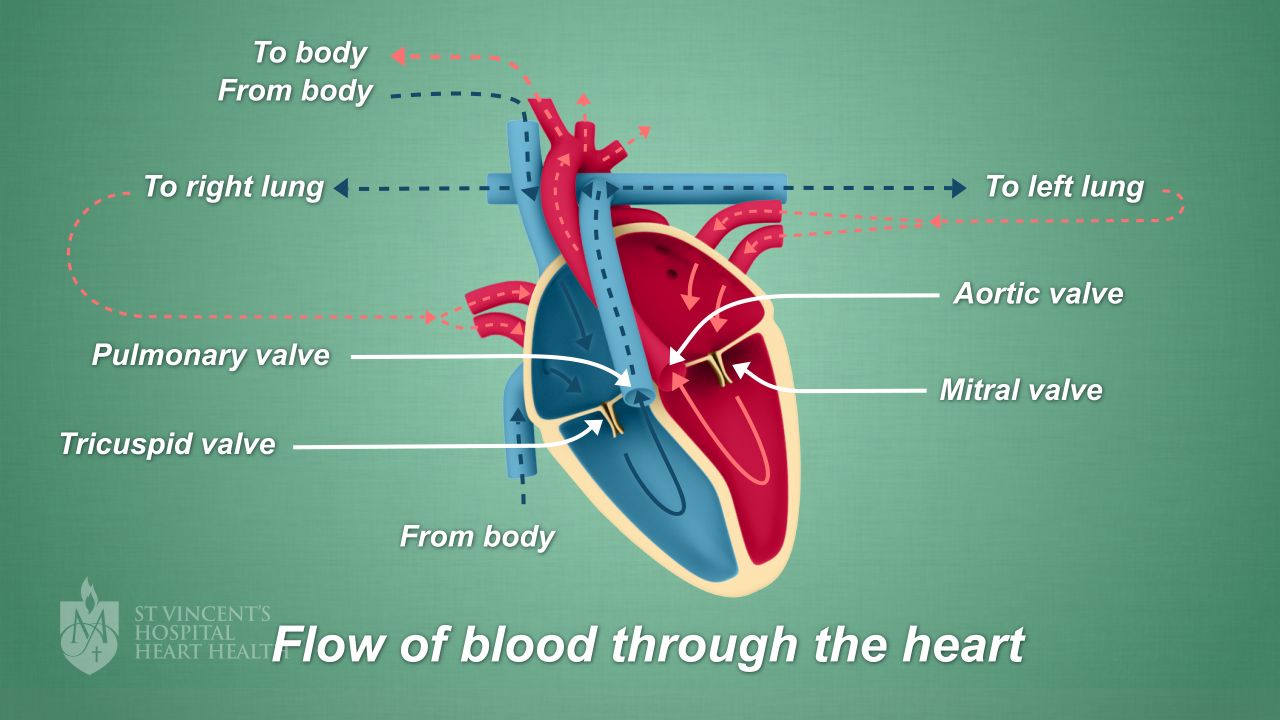TAVI
TAVI stands for Transcatheter Aortic Valve Implantation and is a minimally invasive procedure that helps to repair a damaged aortic valve.
What is a TAVI?
Why do I need a TAVI?
What are the risks of a TAVI?
How do I prepare for a TAVI?
What happens during a TAVI?
What happens after a TAVI?
What is a TAVI?
TAVI stands for Transcatheter Aortic Valve Implantation. It’s a procedure that helps to improve a damaged aortic valve. During a TAVI procedure, an artificial valve made of natural animal heart tissue (usually from a cow or a pig) will be implanted into your heart.
Why do I need a TAVI?
Your doctor may recommend a TAVI procedure for you if you have a problem with your aortic valve and are too high risk for open heart surgery. Your aortic valve is one of four main valves in your heart. As your heart beats, it opens and closes, allowing blood to flow from your heart to the rest of your body in one direction.
The diagram below shows the direction of blood flow through your heart valves

As you age, calcium can build up on the valve, making it harder and thicker. As a result, your aortic valve is unable to open properly, forcing the heart to work harder to pump blood through the narrowed valve. This is a condition called aortic stenosis.
Aortic stenosis can lead to breathlessness, chest pain, fatigue and dizziness. A TAVI procedure helps to repair your valve.
Below, you can watch a short video from one of our specialists explaining more about a TAVI.
Below, you can watch an animation explaining what happens during a TAVI procedure.
What are the risks of a TAVI?
A TAVI is a minimally invasive procedure, which means it is performed through many small incisions - or cuts - instead of one large one. Minimally invasive surgery helps to give you a better chance of recovering quicker after your surgery. However, as with any procedure, there are some risks associated with a TAVI.
Risks can include:
- Bleeding or vascular injury
- Abnormal heart rhythms (arrhythmias) – sometimes requiring pacemaker
- Obstructed coronary artery
- Aortic regurgitation
- Kidney impairment
- Stroke
- Death
Your doctor will explain the risks to you in detail before you agree to the surgery - and you’re also encouraged to discuss any questions or concerns with your medical team. You will be asked to sign a consent form to agree to the procedure.
How do I prepare for a TAVI?
You will prepare for your TAVI procedure by:
- Asking your doctor about taking your usual medications - especially if you take medication for diabetes or blood thinning medications. If you take SGLT2 medicine for diabetes, you will need to stop taking them at least 3 days before your surgery. Read our Patient Information Guide on SGLT2 inhibitors for diabetes.
- Not eating - for at least six hours before your procedure begins
- Not drinking any clear fluids for two hours beforehand - clear fluids and drinks are ones you can see through, such as water and tea without milk
Before your procedure begins, you’ll be asked to remove any jewellery and wear a hospital gown.
What happens during a TAVI?
Your TAVI procedure takes place in a hospital room which looks like an operating theatre. You will be taken to the procedure room on a trolley or wheelchair and be asked to lie on a narrow procedure table. You will be awake throughout your procedure, and your doctor will give you medication to help you relax. During your procedure:
- The area is numbed, and either a local anaesthetic with sedation or a general anaesthetic is given. This will be discussed with you prior to your procedure
- A balloon catheter is inserted into an artery in either your groin or underneath your collarbone
- The balloon catheter is guided into your heart and positioned within the opening of the aortic valve
- The doctor gently inflates the balloon to open up the valve
- The doctor implants a new aortic valve using metal mesh tube which keeps the valve in place - the new valve either expands by itself or is expanded using the balloon, depending on the type of valve used
- The new valve is positioned to push aside your damaged aortic valve
- The balloon is deflated and your doctor removes the balloon catheter
What happens after a TAVI?
After your TAVI procedure, your doctor will monitor you closely and tell you how long you need to stay in hospital. Remember that your team are dedicated to ensuring the best possible outcome for you, and they will be there to support your recovery every step of the way.
Before you go home, you’ll be given detailed instructions on how to recover well and return to good health - and it’s very important that you follow this advice. If you continue to feel any signs or symptoms that make you feel concerned, make an appointment with your doctor.
For more information, please read the St Vincent's Campus TAVI Patient Information Booklet.